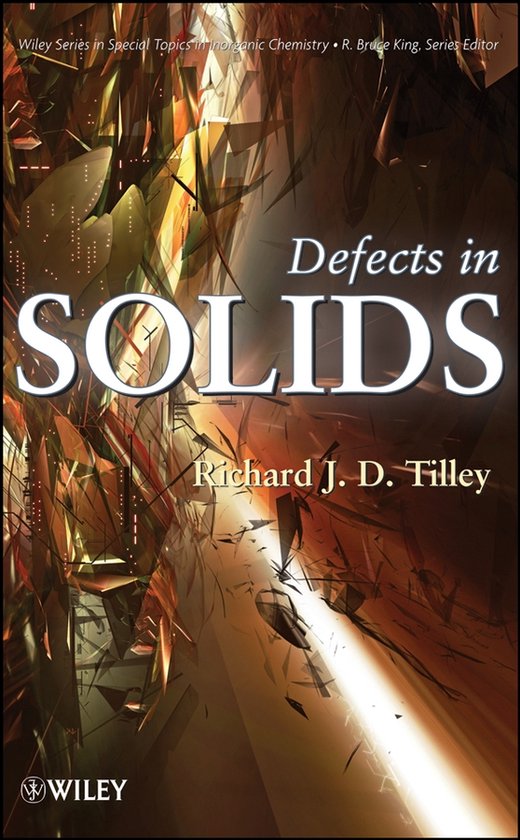
| Taal: | en |
| Bindwijze: | Hardcover |
| Oorspronkelijke releasedatum: | 31 oktober 2008 |
| Aantal pagina's: | 552 |
| Illustraties: | Nee |
| Hoofdauteur: | Richard J. D. Tilley |
| Tweede Auteur: | Richard J. D. Tilley |
| Tweede Auteur: | Richard J. D. Tilley |
| Editie: | illustrated edition |
| Extra groot lettertype: | Nee |
| Product breedte: | 161 mm |
| Product hoogte: | 30 mm |
| Product lengte: | 243 mm |
| Studieboek: | Nee |
| Verpakking breedte: | 152 mm |
| Verpakking hoogte: | 25 mm |
| Verpakking lengte: | 235 mm |
| Verpakkingsgewicht: | 885 g |
| Editie: | illustrated edition |
| Extra groot lettertype: | Nee |
| Product breedte: | 161 mm |
| Product hoogte: | 30 mm |
| Product lengte: | 243 mm |
| Studieboek: | Nee |
| Verpakking breedte: | 152 mm |
| Verpakking hoogte: | 25 mm |
| Verpakking lengte: | 235 mm |
| Verpakkingsgewicht: | 885 g |
Defects play an important part in defining both the chemical and physical behavior of a material. In fact, the manipulation of defects underlies the development of the modern silicon-based computer industry, solid-state lasers, battery science, solid oxide fuel cells, hydrogen storage, and display technologies. This guide describes defects, how they form, and how they influence physical properties in order to help scientists manipulate them in the development of new or improved materials. Including an introduction and advanced applications, Defects in Solids:
Covers the basic concepts in the chemistry and physics of defects
Links principles to real-world applications
Covers cutting-edge applications, including solid-state batteries, fast-ion conductors, fuel cells and sensors, and cuprate superconductors
Includes detailed chapters on: point defect chemistry; linear and planar defects; nonstoichiometry and crystal structure; diffusion in solids; ionic conductivity; intrinsic and extrinsic electronic conductivity; and magnetic and optical defects
Features introductory questions at the beginning of each chapter to help readers focus, plus end-of-chapter questions
With a strong emphasis on areas of recent research that represent exciting frontiers, this is a great resource for academic and industrial researchers in materials engineering, semiconductors, information storage and transmission, LCD technologies, and related fields. It's also an excellent text for upper-level undergraduate and graduate students in materials science and engineering, solid-state chemistry and physics, and inorganic chemistry.